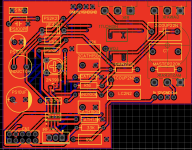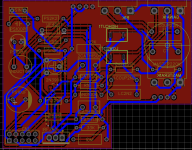Falterthethomist
New member
Hi everyone,
I've got pretty obsessed with diy pedals over the last two years, and I ventured into tube pedals only recently. I've built the Matchless Hotbox, a JTM45 Preamp, and a clone of the kingsley page on veroboards and they all turned out great. However, I recently went down the rabbit hole to create pcbs (for my transistor projects), and I would like to try that for my tube builds as well.
However, my knowledge when it comes to routing and spacing is limited, and i want to avoid any issues with high voltages etc. Does anybody have any advice on that?
Attached is my attempt at a page PCB. Routing width is 30mil and minimum spacing 16mil.


Any help is greatly appreciated. Thanks in advance.
Markus.
I've got pretty obsessed with diy pedals over the last two years, and I ventured into tube pedals only recently. I've built the Matchless Hotbox, a JTM45 Preamp, and a clone of the kingsley page on veroboards and they all turned out great. However, I recently went down the rabbit hole to create pcbs (for my transistor projects), and I would like to try that for my tube builds as well.
However, my knowledge when it comes to routing and spacing is limited, and i want to avoid any issues with high voltages etc. Does anybody have any advice on that?
Attached is my attempt at a page PCB. Routing width is 30mil and minimum spacing 16mil.


Any help is greatly appreciated. Thanks in advance.
Markus.




